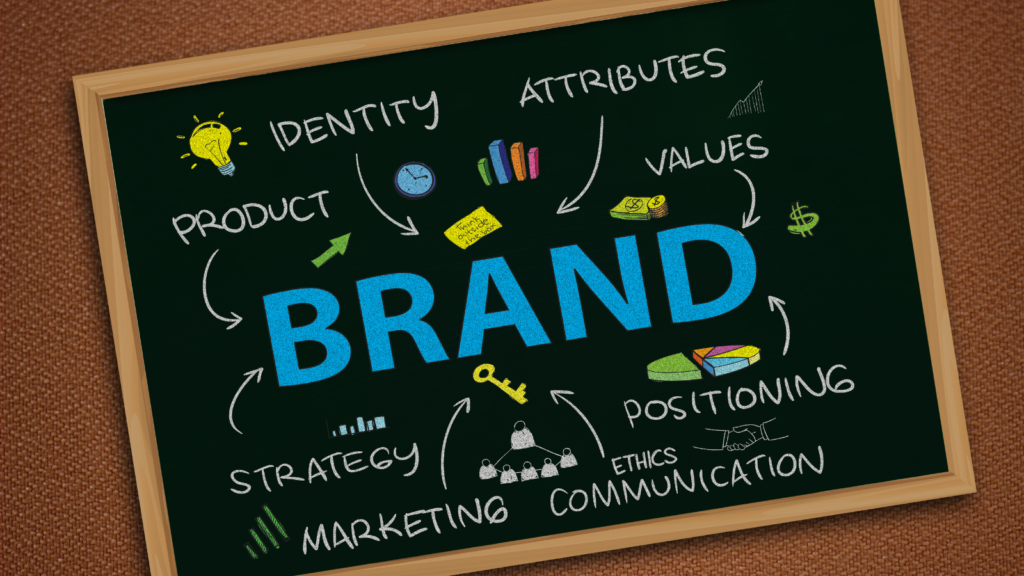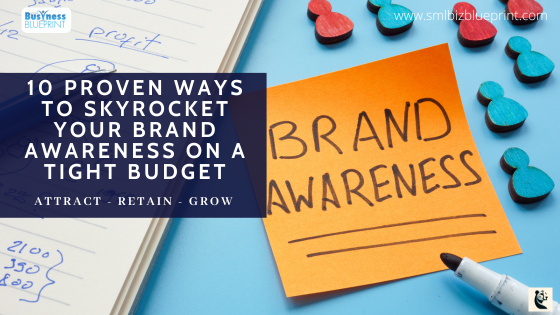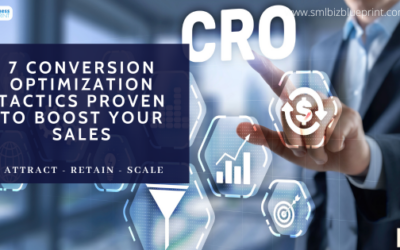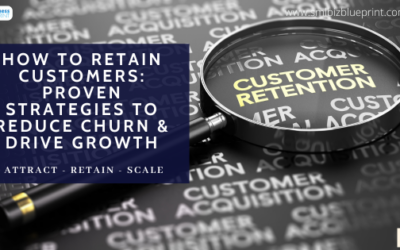Building brand awareness is crucial for any business’s success in today’s competitive marketplace.
However, many small businesses and startups struggle to allocate significant resources toward marketing, leaving them wondering how to grow their brand without breaking the bank.
Fortunately, with the right strategies, you can boost your brand’s visibility even with a limited marketing budget.
In this blog post, we’ll explore ten cost-effective strategies to boost brand awareness specifically designed for businesses looking to make an impact with minimal resources.
These tips, from leveraging social media to repurposing content and collaborating with other brands, will help you maximise your marketing efforts without overspending.
By applying these strategies, you can grow your brand’s visibility and recognition in a sustainable, budget-friendly way.
According to a Gartner survey, 63% of marketers say their top challenge is generating traffic and leads with limited resources.

Let’s dive into the first strategy and discover how to increase your brand’s awareness with a lean marketing budget.
#1 Leverage Social Media for Free Brand Awareness Growth
Social media platforms offer one of the most cost-effective ways to grow your brand, especially when working with limited marketing resources.
With billions of active users worldwide, platforms like Instagram, Facebook, LinkedIn, and TikTok allow you to reach your target audience without requiring a large advertising budget.
By leveraging the power of organic social media engagement, small businesses can significantly boost brand awareness, build relationships with potential customers, and drive meaningful interactions.
Engage with Your Audience
Engagement is key to building brand awareness on social media.
Responding to comments, answering direct messages, and actively participating in conversations about your industry help humanise your brand. The more you interact with your audience, the more visible your brand becomes.
Social algorithms often prioritise accounts that generate meaningful interactions, meaning your brand’s posts could gain more reach without spending money on ads.
Use Hashtags to Increase Visibility
Hashtags are powerful tools for extending the reach of your social media posts. Using relevant and trending hashtags can make your content discoverable to a broader audience beyond your followers.
Platforms like Instagram allow you to use up to 30 hashtags, but it’s often best to stick with a focused selection of 5-10 highly relevant ones.
Research popular hashtags in your industry, such as #BrandAwareness, #MarketingOnABudget, or #SmallBusinessMarketing, and incorporate them into your posts to enhance discoverability.
Post Consistently for Maximum Impact
Consistency is essential when building brand awareness on social media. Regular posting keeps your brand at the forefront of your audience’s minds.
However, the key is to balance quantity with quality. Focus on delivering valuable content that resonates with your audience, such as how-to guides, behind-the-scenes insights, or user-generated content.
Tools like Buffer or Hootsuite can help you schedule posts in advance, ensuring your content goes live even when you’re busy.
Leverage Platform-Specific Features
Each social media platform offers unique features that can help boost your brand’s visibility. For example, Stories and Reels on Instagram are great for showcasing short, engaging content.
On LinkedIn, publishing long-form posts or articles can position you as a thought leader in your industry.
Creating a group for your community on Facebook can foster engagement and help you build a loyal following.
Tailor your content to each platform to maximise your brand’s reach.
According to a study by Sprout Social, 71% of consumers who have a positive experience with a brand on social media are likely to recommend it to others.
#2 Affordable Content Marketing Tactics for Small Businesses
Content marketing is one of the most powerful and affordable tools for small businesses aiming to build brand awareness.
By creating valuable, informative content, you can engage your audience, drive traffic to your website, and establish your brand as an authority in your industry—all without a hefty advertising budget.
The key to success lies in producing content that attracts attention and provides real value to your readers.
Focus on Evergreen Content
Evergreen content—articles, guides, or videos that remain relevant over time—can continuously drive traffic to your website long after it’s published.
This type of content benefits small businesses because it has a long shelf life, requires less frequent updates, and consistently attracts new visitors.
Think about creating how-to guides, product tutorials, or industry insights that address your audience’s long-term needs. Examples include “A Beginner’s Guide to Brand Awareness” or “10 Ways to Maximize Your Marketing Budget.”
Optimise for SEO
Search engine optimisation (SEO) is essential for content marketing success, especially with limited resources.
By optimising your content for relevant keywords, you can improve your visibility in search engine results without having to spend on paid ads. Research long-tail keywords such as “cost-effective brand awareness strategies” or “how to grow brand awareness on a budget” and naturally incorporate them into your content.
This will help your blog posts rank higher in search results and attract organic traffic.
Repurpose Your Existing Content
One of the best ways to maximise the impact of your content is to repurpose it across different formats and platforms. A blog post can be transformed into a video, an infographic, or even a series of social media posts.
Repurposing allows you to reach different audience segments without creating new content from scratch.
For instance, you can take a detailed blog post about “Affordable Marketing Tips for Small Businesses” and turn it into a quick Instagram Story or a YouTube explainer video.
This saves time and resources and ensures that your content reaches a wider audience.
Promote Your Content on Multiple Channels
Content creation is only part of the equation; promotion is equally important. Once you’ve created a piece of content, share it across multiple channels, including your website, social media, email newsletters, and even industry forums.
The more places your content appears, the more visibility your brand will gain.
Additionally, consider guest posting on other blogs or industry sites to reach new audiences and drive traffic back to your own platform.
According to the Content Marketing Institute, content marketing generates over three times as many leads as traditional marketing while costing 62% less
#3 How to Use Email Marketing to Strengthen Brand Recognition
Email marketing is a powerful and budget-friendly way to build brand awareness and strengthen customer relationships. With an email list of engaged subscribers, you have a direct line to your audience, allowing you to nurture leads, promote your products, and keep your brand top-of-mind without heavy financial investment.
To maximise the impact of your email marketing efforts, focus on delivering value through personalisation, segmentation, and well-designed campaigns.
Segment Your Email List for Targeted Messaging
One of the most effective ways to enhance brand recognition through email marketing is by segmenting your list. Not all customers are at the same stage of their buying journey, and sending generic emails can lead to low engagement.
By dividing your email list into segments based on behaviour, preferences, or demographics, you can tailor your messaging to address the specific needs of each group.
For example, new subscribers might receive a welcome series that introduces your brand, while repeat customers could receive loyalty discounts or exclusive offers.
This personalised approach increases engagement and helps establish a stronger connection with your brand.
Personalise Your Emails for Better Engagement
Personalisation goes beyond using a subscriber’s first name in the subject line. It involves crafting content that resonates with your audience’s interests and pain points.
You can create highly relevant emails that speak directly to your subscribers by analysing customer data.
For instance, if you know that a segment of your audience is interested in budget-friendly marketing solutions, you could send them a tailored email with resources like “5 Affordable Strategies to Boost Brand Awareness.”
Personalised emails increase open and click-through rates, making your brand more memorable.
Offer Value Through Content and Offers
To build long-term brand recognition, it’s essential that every email you send offers value to your subscribers.
This could come in the form of helpful content, such as guides, tips, and industry insights, or exclusive promotions and discounts that incentivise action.
For example, a monthly newsletter could feature articles on improving brand visibility on a budget and an exclusive offer for a discounted service or product.
The key is consistently providing value that aligns with your audience’s needs and interests, keeping your brand at the forefront of their minds.
Design Emails to Reinforce Your Brand Identity
A well-designed email looks professional and reinforces your brand’s visual identity. Use consistent colours, fonts, logos, and imagery that align with your brand to create a cohesive experience across all customer touchpoints.
Every email should feel like an extension of your website and social media, ensuring subscribers instantly recognise your brand when they open their inbox.
In addition, make sure your emails are mobile-friendly, as more than half of emails are opened on mobile devices.
Research by Campaign Monitor shows that marketers who use segmented campaigns see a 760% increase in revenue.

#4 Top Free Tools to Boost Brand Awareness and Visibility
Building brand awareness doesn’t always require a large budget—sometimes, it’s just about using the right tools to maximise your efforts. Fortunately, several free tools can help small businesses improve visibility, manage marketing campaigns, and track brand growth without additional costs.
By leveraging these tools, you can create professional content, manage social media efficiently, and gain valuable insights into your brand’s performance.
Google Analytics for Tracking Website Traffic
Google Analytics is essential for tracking how visitors find and interact with your website. It allows you to monitor which pages are most popular, where your traffic is coming from (such as social media or search engines), and how long users stay on your site.
This data helps you identify which marketing efforts drive traffic and brand visibility, allowing you to optimise future strategies. With Google Analytics, you can track conversions, measure engagement with specific content, and see how your brand performs over time—all without spending a dime.
Canva for Creating Visual Content
Visual content is a key component of any successful brand awareness campaign. Canva is a free and easy-to-use design tool that allows small businesses to create professional-quality graphics for social media posts, blog images, infographics, and more.
With its drag-and-drop interface and customisable templates, even users without design experience can create engaging visuals that align with their brand identity.
Whether you’re designing a promotional banner or a shareable quote image, Canva offers the flexibility to create on-brand visuals that increase your visibility online.
Buffer and Hootsuite for Social Media Management
Managing multiple social media accounts can be time-consuming, but tools like Buffer and Hootsuite make the process more efficient.
Both platforms offer free plans that allow you to schedule posts in advance, monitor engagement, and track the performance of your social media campaigns.
Using these tools, you can ensure that your brand remains visible even during busy times, with regular content going live across different platforms.
Consistency is crucial for brand awareness, and these tools help maintain it without requiring constant real-time posting.
Google My Business for Local Brand Visibility
For businesses looking to build a strong local presence, Google My Business is an invaluable free tool.
By creating and optimising your Google My Business profile, you can appear in local search results and Google Maps when potential customers search for relevant services or products.
This is especially important for brick-and-mortar businesses that rely on local foot traffic.
Regularly updating your profile with current information, photos, and customer reviews increases your chances of appearing in the coveted local pack—a section that prominently features businesses on Google’s first page.
According to HubSpot, businesses that post regularly on social media see a 25% increase in engagement compared to those that don’t, and tools like Buffer and Hootsuite help streamline this process for better consistency.
#5 Partnering with Other Brands to Amplify Your Reach
Strategic partnerships with other businesses can be a game-changing, low-cost strategy for building brand awareness.
Collaborating with complementary brands allows you to tap into new audiences, share resources, and generate buzz around your products or services.
When executed well, partnerships allow both brands to leverage each other’s strengths and grow together without requiring a significant marketing budget.
Identify Complementary Brands
The key to a successful brand partnership is finding complementary businesses that share your target audience but are not direct competitors.
For example, if you sell home decor products, you could partner with a furniture retailer or a home improvement company. This way, you benefit from the cross-promotion, introducing your brand to a new, relevant customer base. Look for companies whose products or services align well with yours and offer mutual value.
Co-Host Events or Webinars
One of the most effective ways to partner with other brands is by co-hosting events or webinars. Virtual events, in particular, allow both brands to engage their audiences in an interactive setting while sharing the workload and costs.
For example, if your business focuses on affordable marketing solutions, you could partner with a digital marketing agency to co-host a webinar on “How Small Businesses Can Increase Brand Awareness on a Budget.”
Each brand promotes the event to its audience, doubling its reach and creating a sense of authority in your niche.
Create Joint Marketing Campaigns
Running joint marketing campaigns is another powerful way to amplify your brand awareness.
These could involve co-branded content, such as blog posts, social media takeovers, or giveaways. For instance, you and a partnering brand could collaborate on a giveaway, offering a bundle of both your products as a prize.
By sharing the campaign across your respective platforms, you increase visibility and engagement from two different audiences while splitting the costs and workload.
Leverage Cross-Promotion on Social Media
Cross-promotion is a simple yet highly effective partnership tactic. Sharing each other’s content, mentions, or promotions on social media allows both brands to introduce themselves to a broader audience without additional marketing expenses.
For example, you could feature your partner’s product in your Instagram Stories while they do the same for you.
This strategy creates credibility and trust with a new audience because your brand is being vouched for by a business they already follow.
According to a Nielsen study, 92% of consumers trust recommendations from individuals or brands they know, making strategic partnerships a highly effective way to build credibility and grow brand awareness.
#6 Harnessing the Power of Customer Reviews and Testimonials
Customer reviews and testimonials are a free and highly credible way to build brand awareness and trust.
In an age where consumers rely heavily on peer opinions to make purchasing decisions, showcasing positive customer experiences can significantly enhance your brand’s reputation and visibility.
Encouraging satisfied customers to share their feedback strengthens your credibility and boosts your chances of attracting new customers.
Encourage Customers to Leave Reviews
The first step to leveraging customer reviews is encouraging your customers to leave feedback.
After a purchase, send a follow-up email requesting a review or use automated pop-ups on your website that prompt customers to share their experiences. To make the process easier, provide a direct link to your Google My Business page, Yelp, or your product pages.
Offering a small incentive, such as a discount on their next purchase, can also encourage more customers to leave a review.
Feature Testimonials on Your Website and Social Media
Once you’ve gathered customer reviews, it’s important to highlight them across your marketing channels.
To build trust with potential buyers, create a dedicated testimonials page on your website or feature them on product pages.
Additionally, share positive reviews on your social media platforms, showcasing real customer experiences.
Seeing genuine testimonials from satisfied customers helps reinforce your brand’s reputation, especially when new prospects are still in the decision-making stage.
Respond to Reviews to Build Trust
Whether a review is positive or negative, responding to customer feedback is essential.
Responding to positive reviews shows appreciation and helps build customer loyalty while addressing negative reviews which demonstrates your commitment to customer satisfaction.
Handling criticism professionally and publicly can turn a negative experience into a positive one, showcasing your brand’s dedication to continuous improvement and customer care.
This proactive engagement creates transparency, which potential customers appreciate.
Use Customer Success Stories in Email Campaigns
A powerful way to incorporate reviews and testimonials is through your email marketing campaigns.
In your emails, feature customer success stories highlighting how your product or service helped solve a problem or meet a need. By sharing these stories, you build a deeper connection with your audience, showing them how your brand delivers results.
Email testimonials also serve as social proof, increasing the likelihood that subscribers will trust and engage with your brand.
According to BrightLocal, 87% of consumers read online reviews for local businesses, and 73% of them trust a business more if it has positive reviews.

#7 Low-Budget Local Marketing Tactics for Brand Awareness
Focusing on local marketing can provide a significant return on investment for small businesses looking to build brand awareness on a limited budget.
Targeting your local community can increase visibility among people most likely to engage with and support your brand.
Leveraging local SEO, participating in community events, and tapping into local partnerships are all effective strategies for building brand recognition without a hefty marketing budget.
Optimise Your Google My Business Profile
One of the most powerful (and free) tools for local marketing is Google My Business (GMB).
Optimising your GMB profile ensures that your business appears in local search results and on Google Maps, making it easy for nearby customers to find you.
Ensure your profile is fully completed with accurate business details, hours, and contact information. Regularly update it with new photos, respond to reviews, and add posts about upcoming promotions or events.
Businesses with optimised GMB profiles are more likely to appear in the local pack, a prominent section at the top of search results that can drastically improve visibility.
Participate in Local Events and Sponsorships
Engaging with your local community through events and sponsorships is another cost-effective way to boost brand awareness.
Whether you participate in a local market, sponsor a youth sports team, or support a charity event, these activities allow you to connect with potential customers on a personal level.
Not only does this increase your brand’s visibility, but it also positions your business as an active and trusted community member. Even small contributions, like providing giveaways at a local fair, can leave a lasting impression and encourage word-of-mouth marketing.
Leverage Local SEO
Local SEO is essential for driving traffic to your website and physical location.
Start by ensuring that your business name, address, and phone number (NAP) are consistent across all online directories, including Yelp, Facebook, and your website.
You should also focus on incorporating location-based keywords into your website content, such as “affordable marketing services in [your city]” or “best home improvement store in [your town].”
Optimising for local keywords helps your business appear in searches specific to your area, making it easier for nearby customers to discover your brand.
Partner with Local Influencers or Businesses
Collaborating with local influencers or other small businesses can significantly expand your reach.
Even with smaller followings, local influencers can have a strong impact because their audience is likely based in the same geographic area. Partnering with them for promotions or social media takeovers allows you to introduce your brand to their audience, which often includes engaged local consumers.
Additionally, forming partnerships with complementary businesses for joint promotions or giveaways can help both brands tap into each other’s customer bases, driving more foot traffic and awareness.
According to Google, 46% of all searches have local intent and 76% of people who conduct a local search on their smartphone visit a related business within 24 hours.
#8 Repurposing Existing Content to Expand Your Brand’s Reach
Repurposing your existing content is one of the most efficient and cost-effective ways to increase brand awareness. Instead of constantly creating new material from scratch, you can breathe new life into content that has already performed well by adapting it for different formats and platforms.
Repurposing allows you to reach new audiences, increase engagement, and extend the longevity of your content—all while saving time and resources.
Turn Blog Posts into Infographics or Videos
If you have in-depth blog posts that contain valuable information, transform them into visual formats like infographics or videos. Visual content tends to have higher engagement rates on social media and is more shareable.
An infographic highlighting key data points or a video summarising a blog post’s main ideas can appeal to a more visual audience.
For example, if you’ve written a post on “Cost-Effective Brand Awareness Strategies,” turn the top five tips into an eye-catching infographic or a short explainer video to share on social platforms like Instagram or LinkedIn.
Create Social Media Snippets from Long-Form Content
Long-form content, such as blog posts, white papers, or eBooks, provides a wealth of information that can be broken down into smaller, bite-sized pieces for social media.
You can extract key insights or statistics and use them to create engaging posts for platforms like Twitter, Facebook, or LinkedIn. By spreading out the content over multiple posts, you can keep your brand top-of-mind while driving traffic back to the original piece.
Additionally, using quotes or snippets from customer testimonials or case studies in your social content is an effective way to build trust and generate engagement.
Turn Webinars or Presentations into Downloadable Guides
If your brand has hosted webinars or presentations, you can repurpose that content into downloadable guides or blog posts.
For instance, a webinar on “How Small Businesses Can Build Brand Awareness on a Budget” can be converted into a step-by-step guide that can be offered as a lead magnet on your website.
This allows you to reach an audience that prefers reading over watching videos and provides an opportunity to collect email addresses for future marketing efforts.
Refresh and Update Old Blog Posts
Another simple way to repurpose content is to update and refresh older blog posts with new data, trends, or insights. Search engines favor fresh content, and updating existing posts can help improve their search rankings.
For example, if you have an older post on affordable marketing tactics, updating it with the latest statistics and trends in digital marketing can make it more relevant to today’s audience.
Republishing updated content on social media or in email newsletters can also drive new traffic and boost your brand’s visibility.
#9 Using Influencer Marketing to Build Brand Awareness Without a Major Spend
Influencer marketing is a highly effective strategy for building brand awareness, even on a limited budget.
By partnering with micro-influencers—individuals with smaller but highly engaged followings—your business can tap into niche audiences and grow your brand’s visibility without the high costs associated with celebrity endorsements.
Micro-influencers often have a more personal connection with their followers, making them more authentic and relatable, which can drive greater trust and engagement with your brand.
Focus on Micro-Influencers for High Engagement
Micro-influencers, typically those with between 1,000 to 100,000 followers, often provide the best return on investment for smaller brands.
Their audiences are more targeted and engaged, meaning their recommendations tend to carry more weight with their followers. These influencers are also more affordable and often open to collaborations like product exchanges, commissions, or content partnerships.
By partnering with micro-influencers in your industry, you can amplify your brand’s message to a relevant audience without a large marketing budget.
Build Authentic Partnerships
Authenticity is key when working with influencers. Consumers are savvy, and they can quickly spot inauthentic partnerships, which may negatively impact your brand.
Focus on building genuine relationships with influencers who already align with your brand’s values and mission.
For example, if your business sells eco-friendly products, collaborating with an influencer who actively promotes sustainability creates a natural fit.
This ensures that their endorsement comes across as genuine, increasing the likelihood that their followers will trust and engage with your brand.
Leverage User-Generated Content from Influencers
User-generated content (UGC) created by influencers can serve as a powerful tool for building brand awareness.
When influencers share their experience with your product or service, it acts as social proof, showcasing your brand to a wider audience.
You can repurpose this content by sharing it across your own social media channels, website, and email campaigns, further increasing its reach.
Additionally, running contests or challenges with influencers that encourage their followers to share their own content featuring your product can exponentially grow your brand’s visibility.
Offer Affiliate Programs to Incentivize Influencers
To further motivate micro-influencers and keep costs low, consider offering an affiliate program where influencers earn commissions based on the sales they generate.
This creates a win-win scenario where influencers are incentivized to promote your brand authentically, and you only pay for the direct sales they help you achieve.
Many smaller brands have successfully grown their customer base using affiliate marketing as a low-cost influencer strategy, as it directly ties payment to performance.
A study by HelloSociety found that micro-influencers generate 60% more engagement than macro-influencers and are 6.7 times more cost-effective per engagement.
#10 How Consistency in Branding Helps Maximize Your Limited Budget
Maintaining consistency in your branding is crucial for building a strong, recognizable identity, especially when you’re working with limited marketing resources.
Consistent branding across all platforms and touchpoints helps reinforce your message, making it easier for customers to remember and trust your business.
By creating a cohesive brand image, you can stretch your marketing efforts further, ensuring that every interaction with your audience reinforces the same core message and values.
Use Consistent Visuals Across All Channels
One of the most important elements of branding is your visual identity—your logo, colour scheme, fonts, and imagery.
Your brand should look and feel the same across all touchpoints, whether it’s your website, social media profiles, email marketing, or printed materials. This consistency helps your audience instantly recognise your brand, whether they’re scrolling through Instagram, opening an email, or visiting your website.
By maintaining visual coherence, you create a unified experience that strengthens brand recall and trust.
Maintain a Uniform Brand Voice and Tone
Just as important as visual consistency is the consistency of your brand’s voice and tone. Your brand’s voice reflects its personality, whether it’s professional, casual, friendly, or authoritative.
Once you’ve established your brand’s tone, it should remain consistent across all content—blog posts, social media, emails, and customer service interactions. A consistent voice builds familiarity and trust, allowing your audience to feel connected to your brand regardless of the platform or context.
For example, if your brand adopts a friendly, conversational tone on social media, carry that same tone into your email newsletters and customer support responses.
Reinforce Key Messages
To make the most of your marketing budget, it’s essential to stay focused on repeatedly delivering the same key messages.
Whether you’re promoting a unique selling proposition, a core value, or a brand tagline, your messaging should be consistent across all your marketing efforts.
For example, if your brand promotes itself as a cost-effective solution for small businesses, that message should appear in your ads, social media posts, website copy, and promotional materials.
Consistently reinforcing these core messages helps customers understand what your brand stands for and why they should choose you over competitors.
Align All Marketing Channels
Ensure that all of your marketing channels are aligned with your brand’s overall strategy.
For instance, if you’re running a campaign to promote your new product line, ensure that your messaging and visuals are consistent across all platforms—social media, email, paid ads, and even in-store promotions, if applicable.
This alignment helps customers form a clear and cohesive understanding of your brand and reinforces your value proposition.
Keeping all channels aligned makes it easier to stretch your limited marketing resources, as you can repurpose content and messaging across multiple platforms without losing coherence.
A report by Lucidpress found that consistent branding can increase revenue by up to 23%
Conclusion
Building brand awareness doesn’t have to mean breaking the bank. Businesses with limited marketing resources can make a significant impact and grow their visibility by leveraging cost-effective strategies.
From harnessing the power of social media and content marketing to forming strategic partnerships and repurposing existing content, there are plenty of ways to boost your brand’s presence without overspending.
Consistency in branding, optimizing local SEO, and collaborating with micro-influencers are key tactics ensuring your efforts reach the right audience while building trust and recognition.
Each strategy lets you make the most of your limited resources, helping your brand stand out in a crowded marketplace.
Ready to grow your brand on a budget? Implement one or two of these strategies today and gradually expand as your brand gains traction.
Whether you engage with your audience on social media, optimise your Google My Business profile, or create valuable content, every small step brings you closer to increasing brand awareness.
FAQs
Q1: What is the most cost-effective way to increase brand awareness for small businesses?
A1: The most cost-effective way to increase brand awareness is through organic channels such as social media and content marketing. Engaging with your audience on platforms like Instagram and LinkedIn, creating valuable blog posts, and optimizing for SEO can drive traffic and visibility without a hefty budget.
Q2: How can social media help build brand awareness on a limited budget?
A2: Social media platforms allow small businesses to engage directly with their audience, build relationships, and increase brand visibility for free. By posting consistently, using relevant hashtags, and sharing user-generated content, you can grow your brand’s presence organically without the need for paid advertising.
Q3: How can I repurpose content to boost brand awareness?
A3: Repurposing content involves adapting existing material, such as blog posts or webinars, into new formats like infographics, social media snippets, or videos. This allows you to reach different audience segments and extend the lifespan of your content, increasing its impact and visibility.
Q4: Why is consistent branding important for increasing brand awareness?
A4: Consistent branding helps reinforce your message and create a cohesive identity across all channels. Whether it’s your logo, tone of voice, or key messaging, consistency makes your brand more recognizable, builds trust with your audience, and ensures that your marketing efforts are aligned and effective.
Q5. What role do customer reviews play in building brand awareness?
A5: Customer reviews and testimonials act as social proof, boosting credibility and trust in your brand. By encouraging satisfied customers to leave reviews and showcasing their feedback across your website and social media, you can enhance your brand’s visibility and attract new customers.
Q6: How can local SEO help improve brand visibility on a limited budget?
A6: Optimizing your Google My Business profile and incorporating local keywords into your website content can help your business rank higher in local search results. This increases your visibility among nearby customers, driving traffic to both your website and physical location without a significant marketing spend.
Q7: Are micro-influencers an affordable way to grow brand awareness?
A7: Yes, micro-influencers, with smaller but highly engaged audiences, are a cost-effective way to build brand awareness. They offer authentic promotion to niche audiences and are often willing to collaborate for product exchanges or commissions, making them ideal for businesses with limited budgets.
Other Articles
How to Master Competitive Pricing Without Losing Your Profit Margins
Why Your Leads Aren’t Converting and How to Fix It Fast
10 Proven Customer Retention Strategies for Small Businesses




